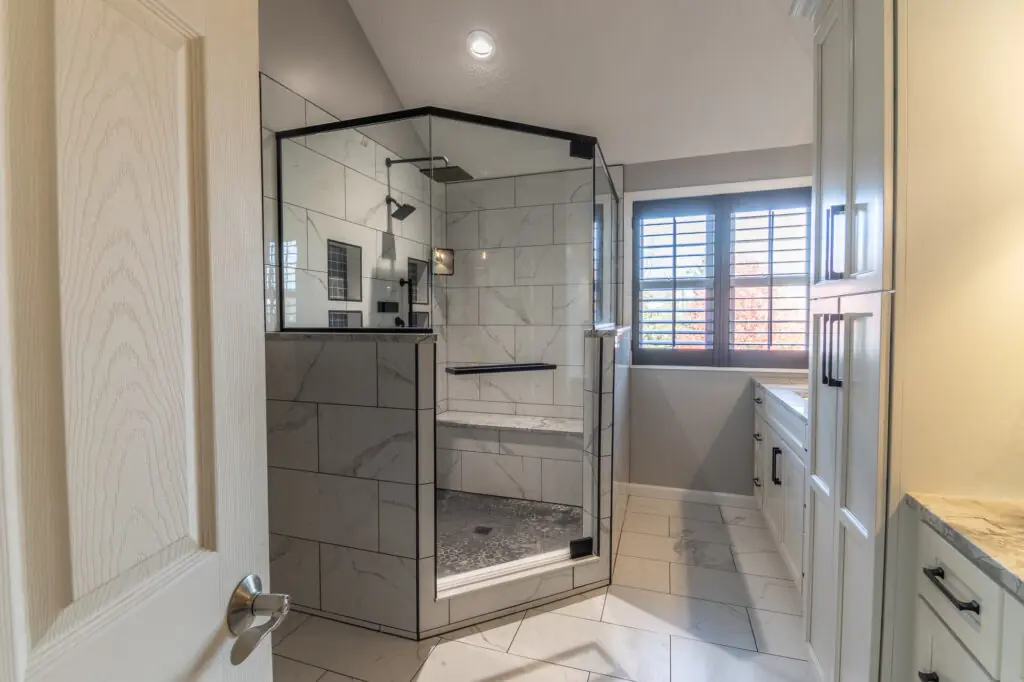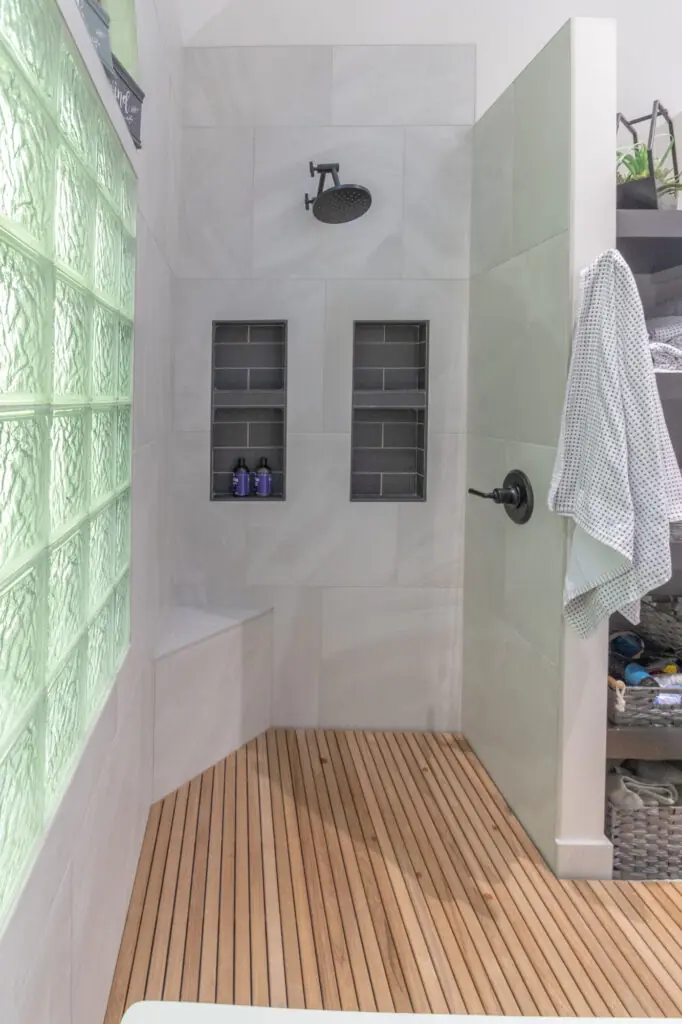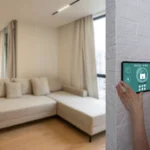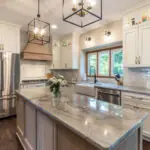Selecting the right bathroom flooring is one of the most important decisions you’ll make in a remodel. The floor must withstand high moisture levels, frequent cleaning, and constant foot traffic, all while setting the tone for your bathroom’s style. In 2025, advancements in material technology, eco-friendly manufacturing, and design aesthetics have expanded your options beyond traditional choices. Whether your priority is durability, comfort, sustainability, or luxury, there’s a bathroom flooring solution that fits your needs.
Luxury Vinyl: Where Style Meets Practicality

Luxury vinyl remains one of the most popular bathroom flooring options thanks to its resilience and design flexibility. Its waterproof construction makes it ideal for high-humidity spaces, and new printing technology creates patterns that closely replicate natural stone, hardwood, and ceramic tile.
Luxury vinyl is available in both plank and tile formats, giving homeowners the freedom to choose a style that complements their décor. The cushioned underlayment in many products provides a softer, warmer feel underfoot than tile or stone, which is especially appreciated during colder months.
Key Advantages
-
Fully waterproof, preventing damage from spills or humidity.
-
Noise-reducing properties make bathrooms quieter and more comfortable.
-
Wide selection of textures and finishes, from rustic oak to polished marble.
Porcelain and Ceramic Tile: Timeless Appeal

Porcelain and ceramic tile remain classics in bathroom flooring for their durability, water resistance, and endless design potential. Porcelain is denser and less porous than ceramic, making it especially suited for high-moisture areas, but both perform well in bathrooms.
Modern manufacturing techniques allow for tiles that mimic wood grains, natural stone, and even concrete finishes. Large-format tiles reduce grout lines for a sleek, contemporary appearance, while smaller mosaic tiles can add intricate detail and texture.
Key Advantages
-
Highly durable surface that resists scratching and staining.
-
Endless pattern possibilities, including herringbone, chevron, and basket weave layouts.
-
Pairs well with radiant heating systems to offset the natural coolness of tile.
-
Glazed finishes protect against fading and moisture intrusion.
Engineered Hardwood: Warmth with a Modern Twist
Engineered hardwood offers the rich beauty of natural wood with improved resistance to humidity. Its layered construction makes it more stable than solid hardwood, reducing the risk of warping in a bathroom environment.
This flooring option brings warmth and character to the space, making it a strong choice for primary bathrooms and guest suites. It’s available in a variety of species, colors, and finishes, allowing for a customized look that matches the overall design of the home.
Key Advantages
-
Real wood veneer delivers authentic grain patterns and warmth.
-
Multi-layered core structure minimizes expansion and contraction.
-
Can be refinished to refresh its appearance over time.
-
Adds long-term value to the home.
Natural Stone: A Luxurious Statement
Natural stone is one of the most elegant bathroom flooring options, offering a timeless and upscale look. Materials like marble, granite, slate, and travertine bring unique color variations and patterns to each installation.

While stone is extremely durable, it requires regular sealing to protect against moisture and stains. Textured or honed finishes improve slip resistance, making them safer for wet environments.
Key Advantages
-
Distinctive, one-of-a-kind appearance that elevates bathroom design.
-
Long-lasting performance when properly maintained.
-
Available in a range of colors and finishes to match any style.
-
Adds premium value to the property.
Waterproof Laminate: Affordable Innovation
Waterproof laminate has evolved significantly in recent years, making it a practical choice for bathrooms. With a moisture-resistant core and tight locking systems, it offers protection against spills and humidity.
Its ability to mimic the look of hardwood or stone makes it an attractive option for those who want a high-end appearance without the higher cost. Floating floor systems also allow for quicker and less disruptive installations.
Key Advantages
-
Cost-effective alternative to hardwood or tile.
-
Strong protective layer guards against scratches and everyday wear.
-
Wide selection of plank widths and patterns.
-
Quick installation process compared to other flooring types.
Emerging Trends in Bathroom Flooring
Eco-friendly flooring materials like treated cork and bamboo are gaining traction as homeowners look for sustainable solutions. These materials are not only environmentally conscious but also bring a natural, earthy aesthetic to your bathroom. Bold patterns, such as herringbone and geometric designs, are also making waves, adding personality and visual interest to modern spaces.

Finding the Perfect Fit for Your Bathroom
The ideal bathroom flooring should balance beauty, durability, and practicality. Luxury vinyl offers waterproof resilience, porcelain and ceramic provide timeless style, engineered hardwood brings warmth, and natural stone delivers luxury. Waterproof laminate offers value, and sustainable options like cork and bamboo combine style with environmental responsibility. By carefully considering your needs and style preferences, you can choose a floor that enhances both the look and function of your bathroom for years to come. Let’s create a space that’s as functional as it is stylish—contact us today to get started.



